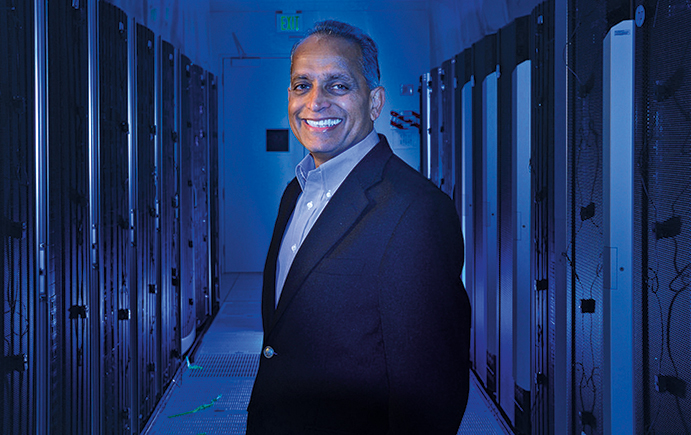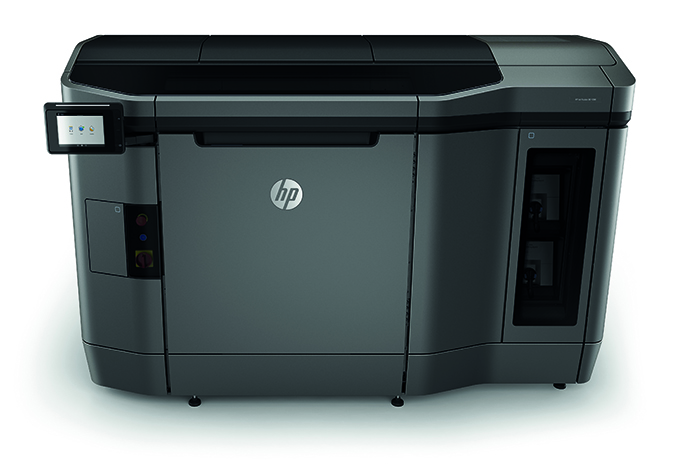
For HP Inc's chief engineer Chandrakant Patel, the relationship between hardware and software has never been closer
As a mechanical engineer in the home of software, Chandrakant Patel sometimes has to remind his colleagues that the real world isn’t made from ones and zeroes.
“Having been in Silicon Valley for 35 years, I used to work with [HP co-founder] Bill Hewlett. I was there when the first disk drives came out, when the chip design was done, when fabrication was here, when a lot of physical fundamentals happened,” said Patel.
The theme of fundamentals is one to which Patel returns frequently. If the 19th century was the age of machines and the 20th century the age of information, HP Inc's chief engineer regards the current century as the time when the two will fully merge. It’s an era he refers to as the “cyber-physical”, characterised by the expansion of the internet of things (IoT).
“A Tesla, or an electric car… it’s an example of a cyber-physical system,” Patel explained.
In this new age, software skills in isolation will no longer suffice, and engineering fundamentals will once again come to the fore in Silicon Valley, he believes. Coding expertise will remain vital but increasingly it will need to be complemented with domain knowledge.
“If you thought civil engineering, mechanical engineering, materials science, heat transfer, fluid mechanics was no longer interesting, you’ve got another think coming,” said Patel. “In the cyber-physical world, that’s more important than anything else.”
According to Patel, HP’s hardware heritage should serve it well in addressing the challenges of the cyber-physical. And some of the company’s existing solutions could give it a distinct advantage in certain areas.
Over the past three-quarters of a century, HP has straddled virtually every aspect of IT, from oscillators to software services. Despite that, it is still perhaps best known for its innovations in printing.
“Our engineers created inkjet, which became big business,” said Patel. “Now we have 3D print platforms that are based on inkjet.”
Patel is referring to Jet Fusion, the additive manufacturing technology that HP sees as a pivotal part of its cyber-physical strategy. As 3D printing matures beyond today’s early adoption for prototyping, the company believes additive can become an increasingly important tool in the manufacturing industry. While the global prototyping market is worth a few billion dollars, the wider manufacturing segment is worth around $12tn. Part of Patel’s role is to identify these types of opportunity, as well as the factors that help create them.
“If you were to take a maritime analogy and think of us as a ship, on the bridge, in the CTO office, we’re looking at megatrends,” he explained. “Social, economic, ecological megatrends. Age and demographic shifts, rapid urbanisation, resource constraints, global conflicts. We look at those megatrends and we look at their impact on the supply/demand management of resources.”

As chief engineer, Patel spends some of his time on the company’s metaphorical ‘bridge’, but the majority of it in the engine room, alongside the people exploring solutions to the megatrend challenges.
“Our engine room has people with expertise in machine learning, from Barcelona to Boise,” he said.
“We have ink chemists, experts in chemistry, we have materials scientists, we have mechanical engineers…machine learning people. We’ve organised the HP engineering group across all these global silos into these key disciplines.”
The goal of this multidisciplinary unit is to provide ‘commando teams’ to take on individual problems on demand and in an agile way. Additive manufacturing
is a key area of focus and one that Patel views as a 21st century archetype of the cyber-physical. With traditional printing in decline, it’s no surprise that HP is seeking to transfer its domain expertise in inkjet across to 3D printing.
The company’s Jet Fusion systems use a bed of pre-heated powder. A fusing agent is then deposited selectively using adapted inkjet technology, with overhead heat lamps causing the deposited ‘ink’ to fuse. According to Patel, the process lends itself to extreme accuracy.
“The precision with ink is phenomenal,” he said. “An area where the ink is deposited is a few hundred microns by microns by microns – it’s called a voxel [volumetric pixel]. At voxel scale, we are building parts.”
It’s a complex process happening at a microscopic level, with multiple heat inputs and losses that have to be accounted for. And, with HP looking to promote the technology as a solution for full-blown manufacturing, parts need to match up against more traditional processes like injection moulding. Achieving these kinds of tolerances requires expertise across multiple domains.
“There’s a very complex heat transfer equation,” said Patel. “We hire PhDs to solve it.
“But we had to address this problem to understand how heat was being transferred, so that we could get consistent parts with good structural properties.
“Every nozzle is an actuator. The lamps are an actuator. Someday the lamps could become lasers. You could have multiple rail lamps, multiple intensities. So you can see the richness of actuators that we could have as we move to the future…
“There’s a lot of fundamental engineering, as I’m used to, and I’m so glad that we’re going back to an era of fundamentals.”
When building in microscopic layers, it is imperative to know one is on the right course. The multitude of actuators therefore requires a complementary suite of sensors. As additive technology progresses, increasing numbers of actuators will generate data, and incredibly complex algorithms will be required to get everything working in harmony. Patel believes artificial intelligence will be key to this co-ordination.
“As it gets more and more advanced, we will have to work on this,” he said. “We will get to a world of multi-input, multi-output control systems where machine learning will play a big role.”
However, machine learning cannot operate in a vacuum, even in the software capital of the world.
“Many times people say, particularly in Silicon Valley: ‘Chandrakant, I don’t need to know anything about a physical system. Just give me data and I’ll figure it out.’ My response is: ‘What data have you got?’
“In this world, machine learning requires domain knowledge... and we are operating at the intersection of data management, machine learning and domain knowledge. If you don’t have domain knowledge, you could collect all the data and you could come to correlation…but you couldn’t get to causation.”
As for the skills required by the next generation of innovators, Patel advises augmenting traditional engineering expertise with its contemporary software counterpart.
“Strength in fundamentals, coupled with computer science,” he urged. “The world of just having data science knowledge is over. The cyber-physical age is a return to fundamentals.”
Over the course of his career, Patel has been granted over 130 patents, authored more than 150 papers, and been elected to Silicon Valley’s Engineering Hall of Fame. After 35 years as a mechanical engineer working in IT, he has some wise words for those who think that software is the only game in town.
“Some of us old timers are teaching some of the newcomers – the millennials – that there is a more exciting world than being in social networking.”




Red Bull makes hydrogen fuel cell play with AVL
Many a true word spoken in jest. "<i><b>Surely EVs are the best solution for motor sports</b></i>?" Naturally, two electric motors demonstrably...